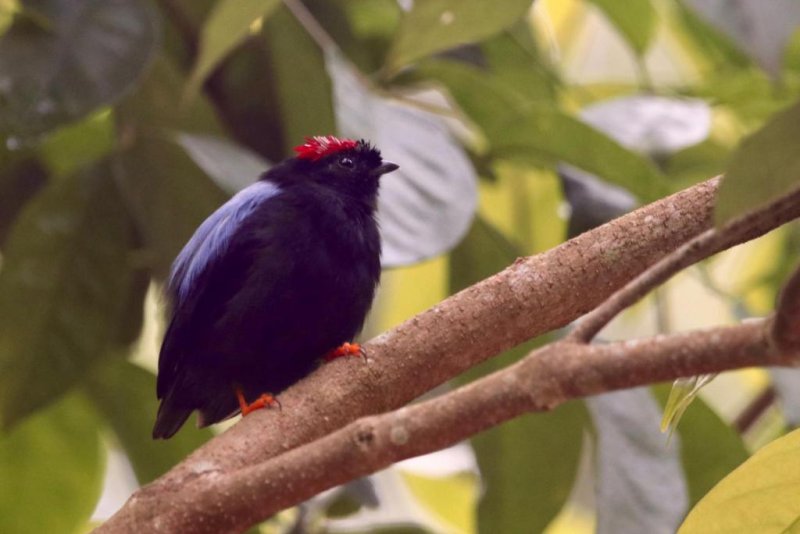Costa Rica's long-tailed manakin prefers wet sections of the forest. It's one of several species losing out as more and more of the forest is converted to agricultural fields. Photo by Daniel Karp/UC Davis
Aug. 18 (UPI) -- Nature is becoming homogenized, researchers at the University of California, Davis, claim in a new study.
The research, published this week in the journal Global Change Biology, suggests the combination of climate change and habitat conversion are curbing biodiversity and encouraging uniformity.
When a team of researchers surveyed the mix of plant and bird species in Costa Rican forests, they found certain species tend to thrive in wetter sections of the forest, while others prefer drier sections. Among open acreage, where forests have been converted to farmland, researchers found the species with a preference for dry sites where omnipresent -- thriving in both wet and dry fields.
"Across Central and South America, we are seeing large areas being converted from native forest to agriculture, and droughts are becoming more frequent," lead study author Daniel Karp, an assistant professor of conservation biology at UC Davis, said in a news release. "Both of these global pressures are favoring the same species and threatening the same species. This means we may be losing biodiversity faster than we previously thought when we were studying climate change and habitat conversion individually."
Karp and his colleagues found the conversion of forests to farms is proving most harmful to a variety of tropical bird species, including tanagers, manakins and woodcreepers. Meanwhile, blackbirds, doves and sparrows are adapting relatively easily to the open fields.
"Now that we know this, we know what to focus on from a conservation perspective," Karp said.
Researchers hope to encourage the targeted preservation of wetter sections of forests, and persuade farmers working on traditionally wet acreage to preserve small sections of forest on their land.















